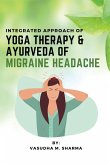A disabling, chronic, neurovascular headache condition is migraine. In women, the disease is more prevalent than in men during their adulthood. The average age for males and females at the onset of migraine is 7.2 and 10.9 years, respectively, and the peak prevalence of migraine between the two sexes is estimated to be between 25 and 55 years of age. It has been estimated that about 30 percent of women and 17 percent of men between the ages of 21 and 34 are affected by migraine (Lipton RB2007& R. Allan purdy2008). Migraine has also been described as a contributing factor in the quality of life, social activities, and family life of patients with a massive one-year monetary loss due to reduced productivity (Liptan RB 2015, Mathew N T 2005 & Stewart WF 1996). Migraine prevalence in children is estimated to be between 3% and 10% worldwide (Ishaq Abu-Arafeh et al 2010). Around 69% of kids with migraine headaches have also been reported (Powers et al 2013). When they are 15 years of age, up to 75 percent of children experience a severe headache. It has been documented that up to 10.6% of children between the ages of 5 and 15 and up to 28% of older teenagers have migraine. A systematic pediatric headache study found that 24% to 90% of children experience headaches, with an overall incidence of 58.4% and a similar incidence in boys and girls in school-age children (Arafeh ia et al 210). The particular pathophysiology of migraine remains far from well elucidated, rendering it a dynamic multifactorial medical disorder (Liptan RB 2001). Mechanisms that involve vascular, neurological, and neuro-inflammatory pathways are generally recognized among the various pathophysiological mechanisms proposed for migraine (Galletti F 2009). Dietary factors, environmental factors, physical factors, and lifestyle changes are the causative factors for migraine. Although the occurrence and severity of migraine vary widely among the population, it is commonly accepted that migraine has a major effect on the health and well-being of the individual affected (Dawn et al., 2009). Occupational, educational, social, leisure and family duties are affected by migraines. There is a stronglink with impairment in the incidence of migraines.








